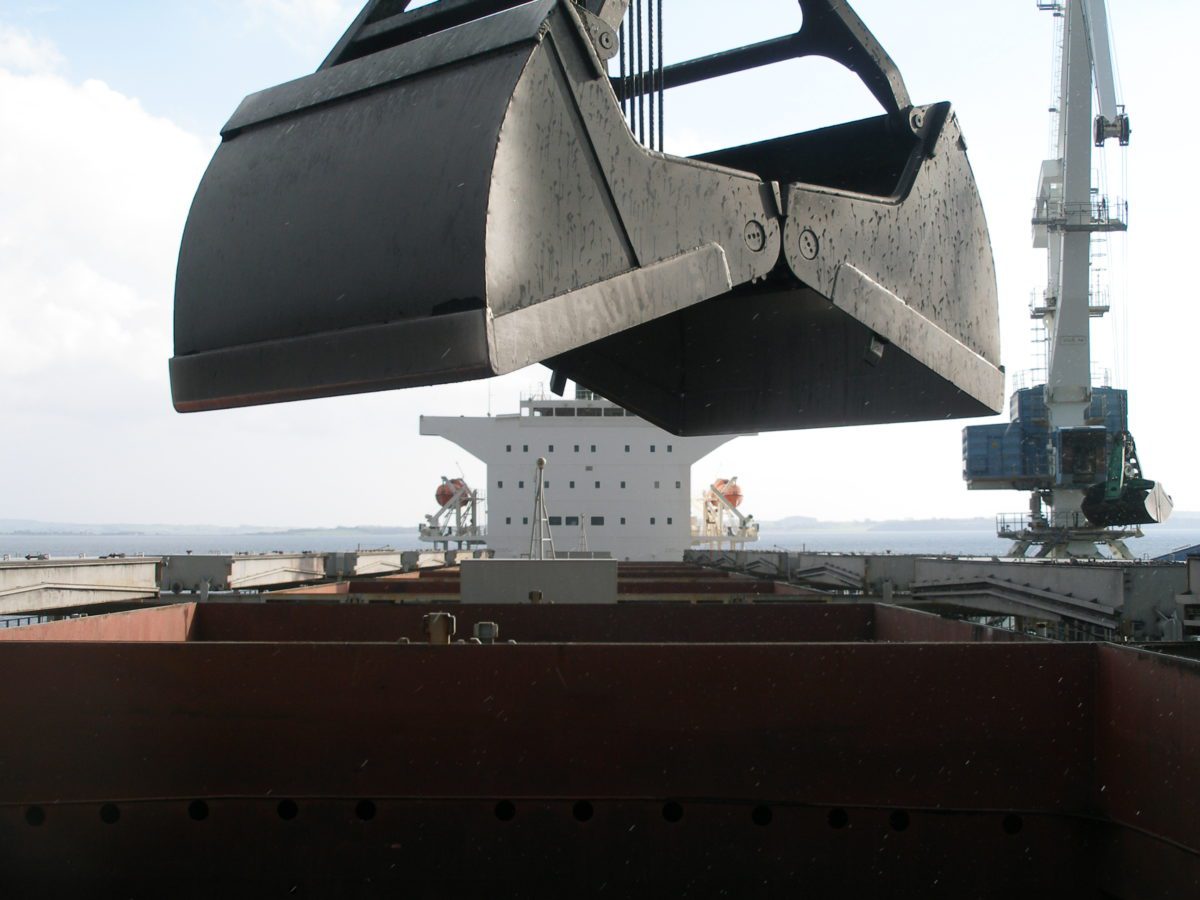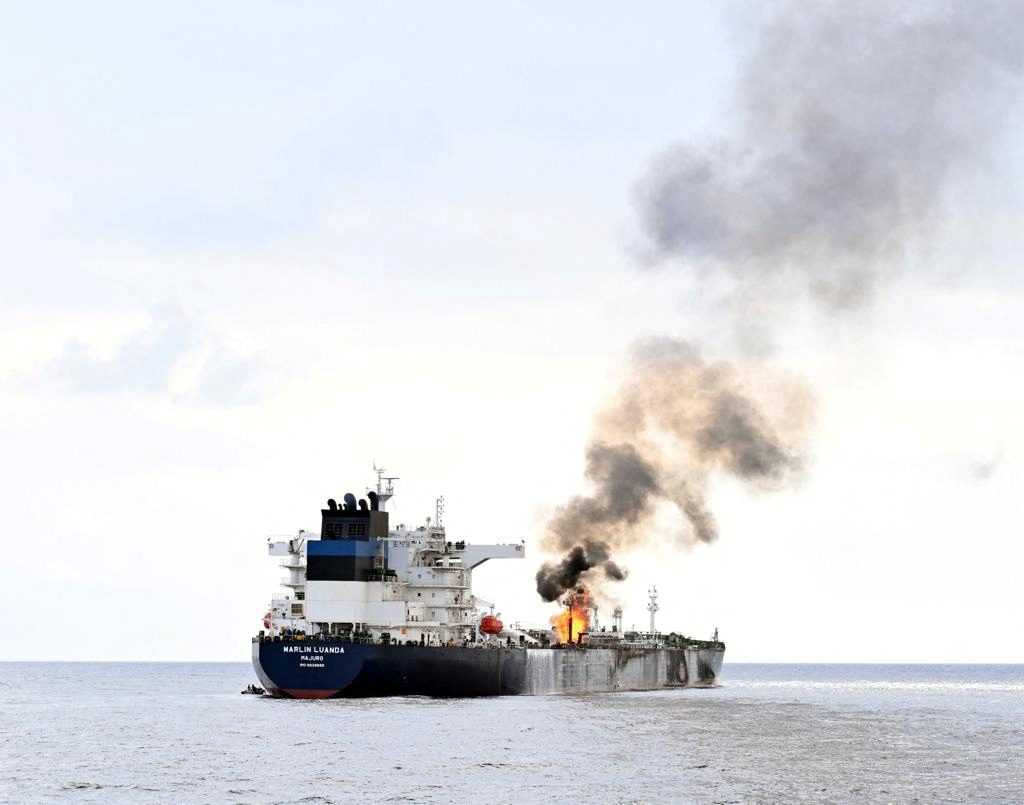Panamax dry cargo vessel. Deck and Grab. Photo: NORDEN
D/S Norden AS, Europe’s biggest commodity-shipping company, is betting that transport rates will continue to slump this year, a wager that will help it return to profit after posting the first annual loss since 1998.
Shares of Norden, which rose 25 percent in the past year, will gain another 7.7 percent in the next 12 months, according to the median estimate of the five most-accurate analysts tracked by Bloomberg. The Hellerup, Denmark-based company booked 20 percent more cargo for 2013 than its 61 Panamaxes can carry, profiting if it can charter extra ships at costs below those agreed to with clients. Rates tumbled 29 percent last month.
Vessel owners are contending with a glut that drove rates 94 percent below their peak in 2007 after they built too many ships. China, the biggest coal buyer, will import 2.1 percent more fuel this year, the slowest expansion since 2008, Barclays Plc estimates. Weaker demand growth is coming as IHS Inc. estimates that orders at shipyards are still equal to 28 percent of existing capacity, a sign the glut may worsen.
“Panamax is the segment with the largest order book, and supply is still growing faster than demand,” said Finn Bjarke Petersen, an analyst at Nordea Markets in Copenhagen whose recommendations on the shares of shipping companies returned 27 percent in the past year. “Norden is positioned to do better because of their coverage, so they will be able to generate cash flow and pay out dividends even in a very weak market.”
Break Even
Daily earnings for Panamaxes averaged $7,684 in 2012, the lowest since at least 1999, according to the Baltic Exchange, the London-based publisher of freight costs on 61 maritime routes. Rates will average $9,500 this year, according to the median of nine analyst predictions compiled by Bloomberg. That’s still less than the $11,000 that Pareto Securities AS estimates the 700-foot ships need to break even.
Rates are volatile, moving 23 percent or more every month last year. Norden will report net income of $23 million in 2013, from a loss of $284.1 million in 2012, the mean of 10 analyst estimates compiled by Bloomberg shows. The company lost $20.3 million in 1998, data compiled by Bloomberg show. Norden will earn an average of $13,835 a day from its Panamax contracts in 2013, according to a Nov. 14 company presentation. That means the company can profit if it can hire ships for less, according to RS Platou Markets AS.
“Our positioning in Panamaxes is reflective of the fact that we think the market in 2013 will still be quite weak,” said Martin Badsted, an executive vice president at Norden in Hellerup. “That’s not only on the demand side, but also because of the new-buildings still coming onto the water.”
Larger Vessels
Coal is the largest cargo for Panamaxes in the spot market, accounting for 78 percent of bookings in the past year, Morgan Stanley estimates. China takes 17 percent of seaborne cargoes, according to Clarkson Plc, the biggest shipbroker. Panamaxes are mainly used to supply the nation because ports in Indonesia, the biggest exporter, can’t accommodate larger vessels, said Steve Rodley, a managing partner at Global Maritime Investments Group, which operates 61 ships and trades freight derivatives.
China more than doubled capacity since 2005 on the Daqin railroad linking Inner Mongolia and Shanxi, its two-biggest coal producing regions, to industrial areas on the coast, curbing its need for imports, according to London-based Barclays. The Shenshuo railway from Shanxi will add 200 million metric tons of annual capacity by 2014, the bank estimates. That’s the equivalent of about 2,500 Panamax cargoes.
Fuel Costs
Ship owners may respond to the weaker demand growth by demolishing older vessels. A record 8.5 million tons of Panamax capacity was scrapped in 2012, and another 5.9 million tons will go this year, London-based Clarkson estimates. Companies may also cut speeds to reduce fuel costs, their biggest expense, and curb capacity. The average carrier sailed at 8.6 knots in 2012, compared with 11.1 in 2009, data compiled by Bloomberg show.
Chinese demand for raw materials may exceed analysts’ expectations as it rebounds from seven consecutive quarters of slowing economic growth. The world’s second-largest economy will accelerate for at least the next six months, expanding at about four times the pace of the U.S., according to the median of as many as 79 economist estimates compiled by Bloomberg.
Slower growth in Chinese coal imports may be offset by strengthening demand elsewhere, with Clarkson forecasting a combined 10 percent expansion in cargoes to India and Japan, the second- and third-largest buyers. Japan is seeking to compensate for nuclear capacity shut down after 2011’s temblor and tsunami, and India’s government is encouraging more imports to increase power generation and ease blackouts, according to Barclays.
Seaborne Trade
The Panamax fleet’s capacity will expand 13 percent to a record 200.5 million deadweight tons this year, exceeding gains in all other classes of commodity carrier, according to London- based Clarkson. That compares with the 5 percent growth the shipbroker anticipates for global seaborne trade in coal. The fuel is the third-largest raw material carried by ships after crude oil and iron ore.
The U.S. Department of Agriculture expects a 15 percent contraction in global grain cargoes in the 2012-13 crop year after drought and heat waves parched fields from Australia to Europe to the Great Plains. That would be the steepest drop in 27 years. The merchant fleet hauls about 90 percent of world trade, according to the Round Table of International Shipping Associations.
The glut in Panamaxes extends across the fleet. The Baltic Dry Index, a measure of rates for four classes of dry-bulk commodity carriers, slumped 60 percent last year. The Baltic Dirty Tanker Index of oil-shipping rates retreated 18 percent and a measure of charges for six types of containers declined 14 percent, according to the Hamburg Shipbrokers’ Association.
Panamax Operators
Norden has not been able to completely avoid the slump and took a $300 million writedown in May to reflect the declining value of its fleet, which also includes other types of commodity carriers and tankers. Its shares, which closed yesterday at 171.80 kroner, will reach 185 kroner in 12 months, based on the mean of estimates from five analysts whose recommendations on the stock returned 25 percent in the past year.
Other Panamax operators are expected to be unprofitable this year. China COSCO Holdings Co., based in Tianjin, China, will report a loss of $76.8 million, according to the mean of seven analyst estimates compiled by Bloomberg. Excel Maritime Carriers Ltd., based in Athens, will lose $153.5 million, according to the average of four predictions.
“Coal demand will impact Panamaxes more than any other sector,” said Rodley of Global Maritime Investments. “There’s too much supply, and then when you have less coal and poor grain crops, it just further accelerates the downward spiral.”
– Isaac Arnsdorf, Copyright 2013 Bloomberg.
Unlock Exclusive Insights Today!
Join the gCaptain Club for curated content, insider opinions, and vibrant community discussions.

 Join The Club
Join The Club













